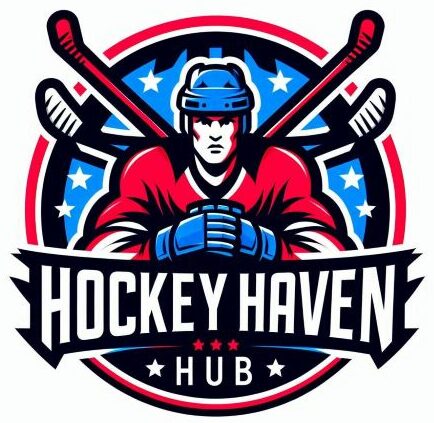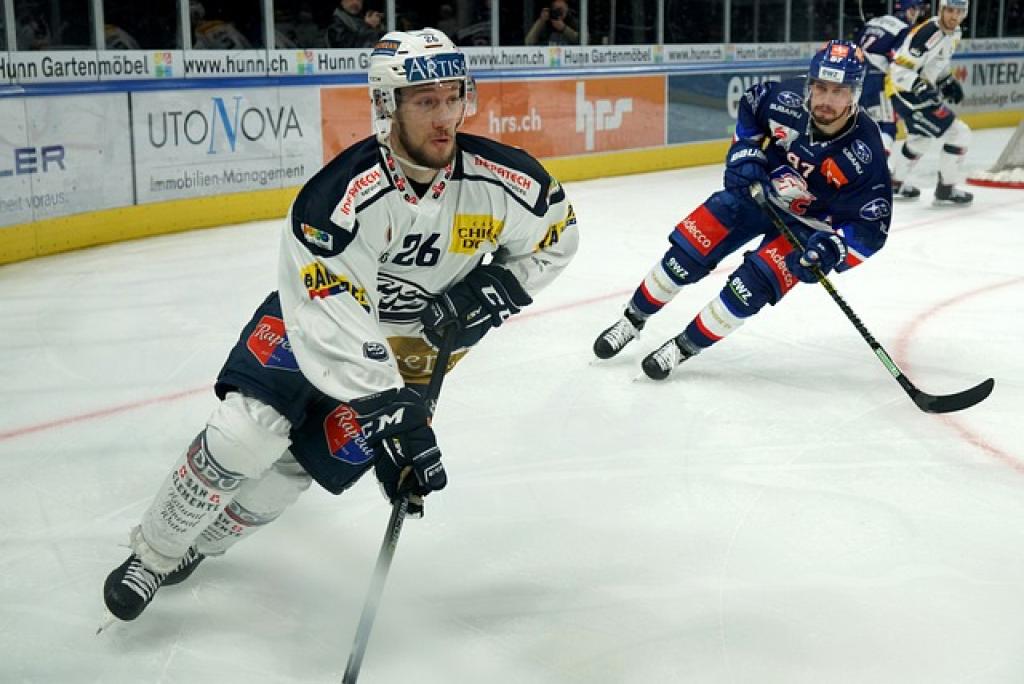So, you’ve decided to dive into the exhilarating world of hockey—awesome choice! This sport is all about speed, skill, and serious teamwork. Hockey is an exciting game that keeps your heart racing and your adrenaline pumping.
But, before you imagine yourself scoring game-winning goals or making that perfect pass, you might wonder where to start. Don’t worry! It’s easier than you think once you get the fundamentals down. This guide will take you through everything you need to hit the ice with confidence.
From selecting the right gear to nailing basic techniques, you’ll find plenty of tips and tricks along the way. So grab your stick, lace up those skates, and get ready to hit the ice. Time to make your mark on the hockey world!
Understanding the Basic Rules of Hockey
Before you start playing, it’s important to grasp the basic rules of hockey to avoid any surprises on the ice. While hockey has some variations like ice hockey, field hockey, or street hockey, they share similar principles.
The primary objective? Score more goals than your opponent by getting the puck into their net. Sounds simple enough, right? But there’s plenty more to learn!
Key Rules to Keep in Mind
For starters, each team typically consists of six players in ice hockey (five skaters and a goalie). Players can skate with the puck but must use their stick to move it around.
Watch out for offsides! Players must enter the attacking zone only after the puck does first, which keeps the game fair and exciting. And bodychecking? It’s a no-go in field hockey but standard in ice hockey, sparking intense, but regulated, contact.
Penalties are issued for rule violations. They can lead to time in the penalty box, so play fair! Learning these basics will have you on your way to mastering the game in no time. Let’s take it to the next level with practice and see your confidence grow on the rink!

Gearing Up: Essential Equipment for Beginners
Before you hit the rink, it’s crucial to arm yourself with the right gear. Not only does it keep you safe, but it also enhances your performance and enjoyment of the game.
Protective Gear
Safety first! Helmets are a must. Protect your head from any unexpected impact. Mouthguards are also essential, keeping your teeth safe and sound during those intense moments. You’ll need additional padding, such as elbow pads, knee pads, and gloves to protect your joints and hands.
The Right Stick
Picking the right stick is vital. They come in various materials and lengths, so find one that’s comfortable for you. Your stick should reach somewhere between your chin and nose when standing, creating a perfect balance for control and power.
Skates
For ice hockey enthusiasts, skates are your best friend. Look for a snug fit that offers support and flexibility. With this gear in hand, you’re all set to dive into the exhilarating world of hockey. It’s time to enjoy the thrill of the game, feeling both protected and prepared!
Mastering the Fundamental Hockey Skating Techniques
Once you’ve got your gear sorted, it’s time to hit the ice and master the art of skating. It’s one of the most crucial skills in hockey and will make or break your play.
The Basic Stance
Before you take off, get comfortable in your basic hockey stance. Bend your knees slightly and keep your back straight. Your feet should be shoulder-width apart, giving you a solid foundation to maintain balance and control.
Starting and Stopping
To start moving, imagine pushing yourself off with one foot while gliding on the other. This technique, called “the stride,” is essential for building speed. Mastering turns is also key. Practice crossovers, where one leg crosses over the other, allowing for quick and agile cornering. It’s a dance of grace and speed that will leave your opponents in the dust. When it’s time to stop, the snowplow stop is your go-to for beginners. Push the inside edges of both skates out, like you’re making a ‘V’ with your feet, to come to a controlled halt. Once you’ve mastered the snowplow stop, it’s time to learn how to do a hockey stop.
Practice Makes Perfect
Be patient with yourself as you learn. Spend time doing drills and repetition to build muscle memory. With dedication and practice, you’ll glide across the ice with confidence and skill, ready to take on any challenge.
Learning the Basics of Stickhandling and Shooting
Once you’ve found your footing on the ice, it’s time to master stickhandling and shooting. These skills are essential for making plays and scoring goals.
Start with your grip. Place one hand on the top of the stick for control, and your other hand about halfway down for power. Keep your elbows bent and relaxed, ready to guide the puck. To practice stickhandling, focus on cradling the puck with the blade of your stick, moving it side to side. This builds your hand-eye coordination and helps you shield the puck from opponents. The key is to keep your head up, scanning the ice while maintaining control.
Shooting comes next. The wrist shot is a fundamental one to learn. Start with the puck on the heel of your stick, then slide it to the toe as you apply pressure and flick your wrists. This technique gives you accuracy and power.
Finally, practice, practice, practice. Repetition will refine your skills, helping you become a formidable player on the ice. Soon you’ll be navigating the rink like a pro, ready to take your shot when the opportunity strikes.
Developing Defensive Skills: Positioning and Strategy
Defense is all about anticipation and knowing where to be on the ice. It starts with positioning. Keep yourself between the puck carrier and your goal. Stay low, with knees bent, ready to react swiftly to any movement.
Understanding your opponents is key. Pay attention to their play patterns, predicting their next move. This allows you to intercept passes and block shots effectively.
Good communication can make or break your defensive strategy. Talk to your teammates on the ice, letting them know your position and alerting them to threats. A well-coordinated team is a defensive powerhouse.
Finally, remember to balance aggression with caution. Step up to challenge opponents when the time is right, but don’t overcommit. Keeping composure will help ensure that you’re always in the right place at the right time to disrupt an attack.
Improving Your Passing Accuracy and Teamwork
Passing accuracy is a crucial skill in hockey. Start by focusing on your hand-eye coordination. Practice with a partner, aiming for their stick blade rather than just sending the puck in their direction. The more accurate you are, the less time your team spends scrambling for possession.
While practicing, pay attention to your grip and body stance, as these affect the precision of your passes. A relaxed grip and a stable posture allow for smoother, more controlled movements, making your passes more reliable.
Effective teamwork involves constant awareness of your teammates’ positions. Keep your head up and scan the rink regularly. Anticipate both their movements and the opponents’, allowing you to deliver timely passes that can change the course of the game.
Finally, fostering trust and chemistry within your team boosts confidence in each pass you make. Support each other, encourage good communication, and work on building a shared understanding of each other’s playing style. This synergy makes your team a formidable force on the ice.
Staying Safe on the Ice: Injury Prevention Tips
Safety should always be a top priority when you’re on the ice. Start by ensuring that all your gear fits properly, offering maximum protection while allowing freedom of movement. Ill-fitting equipment can lead to unnecessary injuries and affect your performance.
Take the time to warm up before hitting the ice. Dynamic stretches and light cardio help prepare your muscles and joints, reducing the risk of strains and sprains. Remember, a good warm-up can greatly reduce the likelihood of ending up sidelined.
Be mindful of your surroundings at all times. Quick thinking and awareness of other players’ movements are key to avoiding unexpected collisions. Practicing situational awareness will keep you and others safer during games and practices.
Lastly, listen to your body. If you’re feeling pain or discomfort, don’t push through it. Rest and seek medical advice as needed to prevent small issues from becoming serious injuries. Healthy players mean a stronger and more competitive game.
The Bottom Line: Putting It All Together and Advancing Your Game
As we wrap things up, it’s clear that understanding hockey fundamentals, combining them with skillful techniques, and prioritizing safety are essential ingredients in advancing your game. By mastering these elements, you’re setting the stage for both personal success and team triumph.
Putting a strong emphasis on fitness not only boosts your agility but also enhances your stamina, making you a vital asset on the ice. Pair this with effective communication with teammates, and you’re on your way to executing strategies that leave a lasting impact.
Don’t forget the importance of mental preparation. Confidence and focus are just as crucial as physical skills. The right mindset can fuel your determination, pushing you to face challenges with resilience.
Also, always seek feedback and be open to learning. Every practice and game is an opportunity to grow and refine your abilities. Watching professional games and analyzing them can provide new insights, further inspiring your journey.
Finally, cherish the camaraderie that hockey brings. Building strong relationships with teammates creates a supportive environment that fosters both individual and collective growth. After all, hockey is as much about enjoying the game and making memories as it is about achieving victory.
In the end, advancing your game is a blend of diligence, passion, and teamwork. Keep these core aspects in mind, and you’re not only bound to become a better player but will also enhance your overall experience on the ice. Stay proactive, keep learning, and most importantly, enjoy every moment of the game.

